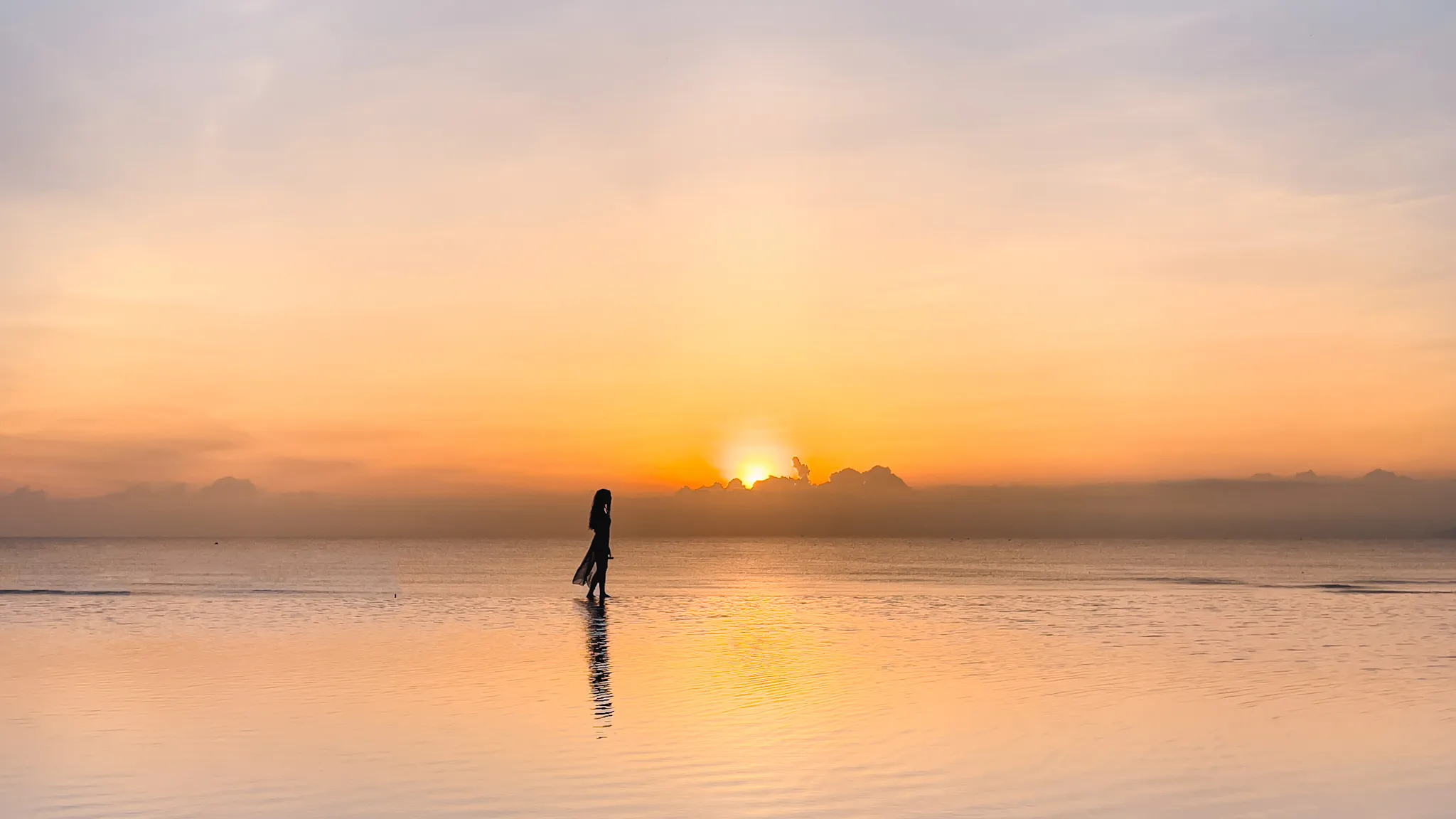
Vietnam is that kind of place that just gets you. From its bustling streets filled with motorbikes to the peaceful serenity of the rice paddies or Ha Long bay, there’s something for every kind of traveler. Whether you’re a solo wanderer or with a group of friends, Vietnam has a vibe that’ll make you want to stay forever. Plus, let’s be honest, it’s probably the only place where you can order pho at 2 am and no one will judge you. Here’s why you should drop everything (but your passport) and head to Vietnam.
MENU
In this post:
Why Visit Vietnam?
Vietnam is the kind of place that gets under your skin in the best way possible. Let’s talk about the geography, this country is a literal feast for your eyes. In the north, you have towering mountains, lush terraced rice paddies, and dramatic karsts rising out of the sea (cue Halong Bay). The south? Beaches, more beaches, and some of the most pristine coastline you’ll ever see. In between? A whole lot of culture, history, and food that’ll make you question your life choices (because who needs a salad when there’s pho, right?).
But let’s be real, there’s a bit of a language barrier. While the major cities like Hanoi and Ho Chi Minh City might have a few people who speak English, it’s not exactly widespread. So, expect to pull out your best charades skills or point at the menu when you’re ordering food (don’t worry, pointing at the food never fails). It’s one of those places where it’s incredibly helpful to know a few basic phrases in Vietnamese, or at least have a translation app on hand, because even Google Translate can’t always save you from the communication breakdown. Don’t let that deter you, though, it adds to the adventure! It’s a great opportunity to learn something new and navigate the world in a way that’s totally out of your comfort zone. Plus, you’ll get extra points for trying.
Another thing to keep in mind is that Vietnam is, in many ways, a country of contrasts. You’ll find bustling urban streets filled with scooters zooming past, and then drive an hour to discover a peaceful village, surrounded by green landscapes and the sound of water buffalo grazing. And the food! It’s everywhere, it’s amazing, and it’s cheap!

So, why visit Vietnam? Because it’s chaotic in the best way, it’s beautiful from every angle, and it’s a country that makes you feel like you’re living in a dream you won’t want to wake up from. Just be prepared to do a little mental gymnastics when it comes to communication, but trust me, it’s worth every moment.
Now, how many days should you stay? Well, here’s the thing: You could explore for weeks and still find new corners to discover. But if you’re short on time, aim for at least 10-14 days, enough to get a taste of the north or south, without rushing through it all. Trust me, you won’t regret it.
👉 Want to explore more gems across Vietnam? Check out my region-specific guides! Like this post on the misty mountains, rice terraces, and limestone wonders of Northern Vietnam (think Sapa, Halong Bay, Hanoi, and Ban Gioc), or this deep dive into the beaches, lantern-lit towns, and pine forests of Southern Vietnam, from Danang and Hoi An to Dalat and Nha Trang!
Best Time to Visit Vietnam
When should you go? The beauty of Vietnam is that you can visit year-round, but the best time to go is from October to April. The weather is cooler in the north (perfect for hiking in Sapa) and the south enjoys warm, sunny days. Just avoid the monsoon season (May to September), unless you’re into the whole “rainy day adventure” vibe, because let’s be real, getting soaked while traveling is only fun for a minute.
How Much Does It Cost?
Vietnam is one of those places where you can travel on a budget and still live like a king. You can book a cheap hostel for around $5–$10 a night, or splurge on boutique hotels for a bit more. Food? Oh, the food. A bowl of pho will cost you about $1–$2 (yes, you heard that right), while a delicious seafood meal will set you back around $5–$10.
As for transportation, buses and trains are pretty affordable, and even domestic flights are fairly cheap. I found my flights from the north to the south to be pretty wallet-friendly, especially when booking in advance. Find the best flight here.
If you’re thinking about booking activities, I recommend booking tours or excursions through platforms like GetYourGuide to ensure you get the best prices and deals. From boat cruises in Halong Bay to street food tours in Hanoi, you can do it all. Check options here.

Getting Around
Alright, now that you’ve landed in Vietnam, let’s talk about how to get around from city to city. You’ve got options, and some are more adventurous than others. For those who love a road trip vibe, buses are the way to go. They’re affordable and will get you between cities like Hanoi, Sapa, and Halong Bay. But if you’re looking for comfort, you can book a sleeper bus (yep, it’s a thing) for a night journey, and you’ll wake up in the next city feeling like you’ve just time-traveled. Trains are also a great option if you’re heading from north to south, like from Hanoi to Danang. It’s slower but offers a scenic route through Vietnam’s lush countryside. Check bus and train options here.
For a bit of adventure, how about a motorcycle? The Ha Giang Loop, in the far north, is a must-do if you’re looking for breathtaking mountain landscapes. Book a guided option here, and in a few hours, you’ll find yourself weaving through winding mountain roads, surrounded by mist-covered peaks and villages that feel frozen in time. Just remember, Vietnam’s traffic is a different breed of chaos, so make sure you’ve got your riding skills in check (and a map on your phone if you’re planning to do it without a guide).
For shorter city-to-city trips, flights are always an option, Vietnam has several budget airlines, and if you book ahead, you can get flights between Hanoi, Danang, and Ho Chi Minh City for next to nothing. Find the best flight here.
When you are in a city, you can also grab a Grab (the Southeast Asian version of Uber) when you’re feeling lazy, or for those of us who enjoy air conditioning more than the wind in our hair. But a word of caution: traffic is intense in the cities, so leave your sense of urgency at home. The journey is half the fun (right?). Need a transfer from or to the airport? Book here.

My Itinerary: The Greatest Hits
Okay, buckle up, because I’m about to take you on a whirlwind tour of Vietnam, starting from the north and making my way down to the south. First stop: Hanoi, the chaotic yet charming capital of Vietnam. It’s like the city’s on a constant caffeine buzz, with street vendors, motorcycles, and people everywhere, all racing to get somewhere. But that’s the magic of it. I spent a few days here eating my weight in spring rolls (don’t judge) and soaking up the history.
Next, I hopped on a van to Sapa. A little warning, if you’re not a fan of windy mountain roads, pack some ginger tea or Dramamine. But the views? Absolutely worth it. Think lush terraced rice fields, fresh mountain air, and a peaceful vibe that’s like a big, soothing exhale after the hustle of Hanoi.
From Sapa, I made my way to Ban Gioc Waterfall. It’s the kind of place that makes you feel like you’re in a postcard. Seriously, I spent more time taking photos than I care to admit, but can you blame me?
And then, there’s Halong Bay. If you’ve ever Googled Vietnam, you’ve probably seen a picture of Halong Bay. The emerald waters, the limestone islands, you know the one. I took a boat cruise (because you have to) and marveled at the towering karsts and islands. Pure magic.
Flying south, I hit up Danang and Hoi An. Danang gave me beautiful beaches and great street food, while Hoi An was the kind of place that makes you want to slow down, sip some coconut water, and just be. I spent my days wandering through the old town, where lanterns light up the streets at night, and my evenings soaking in the laid-back vibe.
Next, Dalat’s cool mountain air was the perfect antidote to the south’s humidity. It’s a quiet, dreamy town with waterfalls and flower gardens. Finally, Nha Trang gave me some of the best beach time. If you’re into diving or just sunbathing with a view, this is your spot.

Why It’s Great for Solo Travelers (Including Solo Female)
Vietnam is one of those destinations where being solo is actually an advantage. Want to hop on a bus to Sapa without worrying about coordinating with a group? Done. Need a moment to yourself in a cozy café in Hoi An? No problem. Traveling alone in Vietnam lets you take things at your own pace, and trust me, that pace is likely to be slower than the constant buzz of city life. You can wander around the maze-like streets of Hanoi without anyone rushing you along.
And when it comes to solo female travelers, Vietnam is a safe destination, just be cautious in busy areas and avoid walking alone late at night (it’s always a good idea to follow the buddy system, right?). You’re never far from an adventure, and when you’re alone, you get to choose exactly what kind of adventure that will be.
Staying Connected: Best SIM Cards & WiFi Speeds
Let’s be real, the minute you land, you’ll need to connect to the outside world. No shame in that! Staying connected in Vietnam is a breeze, and let’s just say the WiFi is better than you might expect. Whether you’re chilling in a café in Hoi An or working remotely from a hotel in Dalat, you’ll have no trouble accessing the internet. I found WiFi to be generally fast in most places, cafés, hotels, and restaurants usually offer free WiFi, and the speeds are fast enough for video calls and streaming. If you’re a remote worker, you’re in luck, Vietnam has decent infrastructure to support digital nomads. You can even find coworking spaces in major cities like Hanoi, Ho Chi Minh City, and Danang, with strong connections to keep you productive.
Stay secure and unlock better deals with a VPN! Protect your data, access cheaper flights, and keep streaming your favorite Netflix shows from anywhere. Fast, private, and hassle-free browsing wherever you go! Get yours here.
For SIM cards, I recommend grabbing a Viettel or Mobifone SIM. Be prepared, though, that once you get out of the cities, the signal may dip in more rural areas, but it’s still better than trying to find WiFi on a desert island.
Or skip the hassle of hunting for a local SIM, Airalo gives you instant, affordable, and hassle-free connectivity the moment you land. No physical SIMs, no surprise fees, just seamless data in multiple countries with one easy app. Stay connected smarter, check options here.

All the Things You Didn’t Know You Needed to Know About Vietnam
Let’s start with something totally iconic, the Ha Giang Loop. If you’re the kind of person who likes to take the road less traveled, this motorcycle adventure will be your ticket to one of Vietnam’s most jaw-dropping landscapes. The loop is a multi-day journey, taking you through rugged mountain terrain, valleys, and tiny villages. Every twist and turn offers a new stunning view, you’ll cross bridges, ride along cliff edges, and stop in local towns where you might be the only foreigner for miles. It’s a challenging ride, but the kind of adventure that leaves you with memories, and Instagram shots that you’ll never forget. You can rent a bike in Ha Giang and follow the loop, or book a guide here.
In addition to the Ha Giang Loop, Vietnam is packed with unexpected surprises. For example, did you know that Vietnam has a massive cave system? Phong Nha-Kẻ Bàng National Park is home to some of the largest caves in the world, including Son Doong, which is so big, it has its own ecosystem. If you’re up for an adventure, you can join a guided cave tour, but be prepared, getting through these caves is no small feat.
Also, Vietnam’s street food culture is famous for more than just pho; the street food scene in cities like Hanoi and Ho Chi Minh City is a culinary treasure hunt. From bánh mì to spring rolls, you’ll find food that’ll make your taste buds sing.
FAQ
Frequently Asked Questions About Vietnam
A: The most popular way is by bus, which takes about 5–6 hours. There are sleeper buses and regular buses, so pick your poison. Alternatively, you can hire a private car or take a train if you’re looking for a more scenic route. Find the best deals here.
Safety? Well, let’s just say it’s adventurous. But if you’re comfortable with the madness of traffic, it’s a great way to explore. Just wear a helmet and keep your wits about you!
Tipping isn’t expected, but it’s appreciated. For example, rounding up your bill or leaving a dollar or two for great service is a nice gesture.
Yes, most travelers will need a visa. You can get one on arrival (depending on your nationality) or apply online for an e-visa. It’s a simple process, and totally worth the extra step.
Vietnam’s currency is the Vietnamese Dong (VND). While major hotels, restaurants, and shops in cities like Hanoi may accept credit cards, cash is predominantly used, especially in rural areas. ATMs are widely available in cities and towns, so it’s advisable to carry sufficient cash when traveling to remote locations.
Final Thoughts
Vietnam is the kind of place where every day feels like a new adventure. Whether you’re motorbiking through the mountains, soaking up the vibrant city life, or just relaxing by the beach, there’s always something new to discover. It’s a country that’ll push you out of your comfort zone, but in the best way possible. The landscapes are jaw-dropping, the culture rich, and the experiences are nothing short of unforgettable. So go ahead, pack your bags (but not too much, trust me, you won’t need it), and prepare for a journey through one of Southeast Asia’s most dynamic countries. Vietnam will show you a side of life that you won’t find anywhere else, and you’ll leave with stories that will last a lifetime. Now, let’s dive into the details of the North or South of Vietnam!
Just before you go: Travel insurance is a must-have for any trip—whether it’s covering medical emergencies, trip cancellations, or lost luggage, it’s your reliable backup plan. Stay worry-free and focus on the adventure, knowing you’re protected no matter what happens! Get protected here.

















